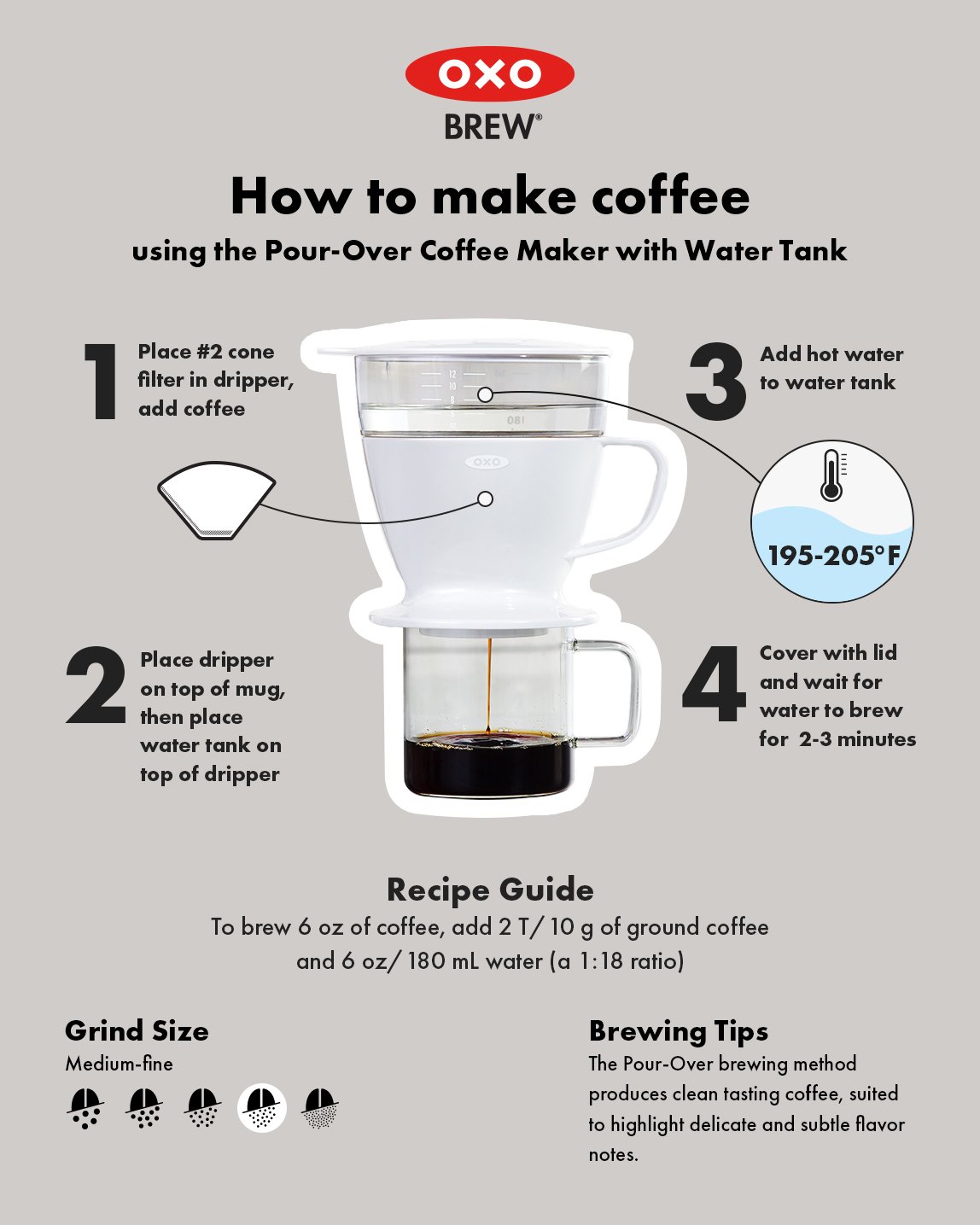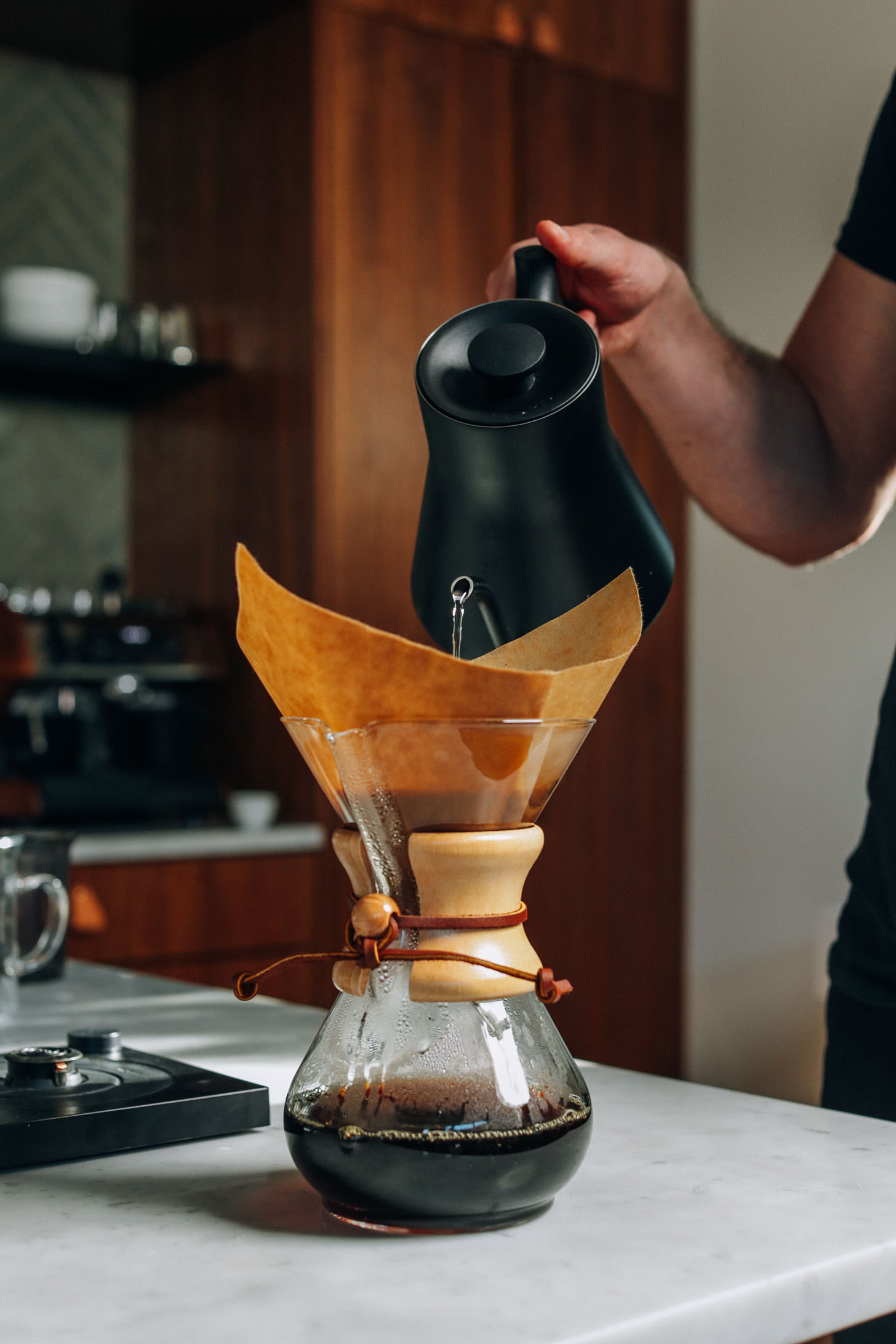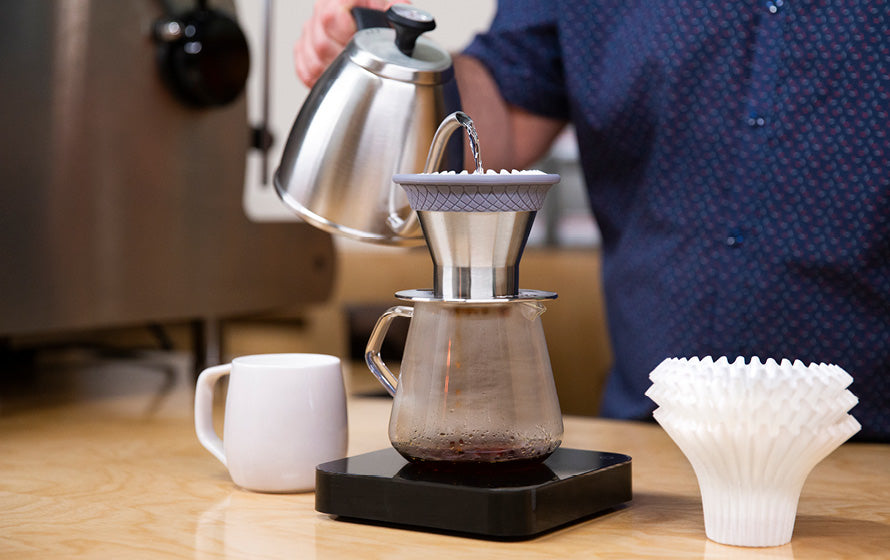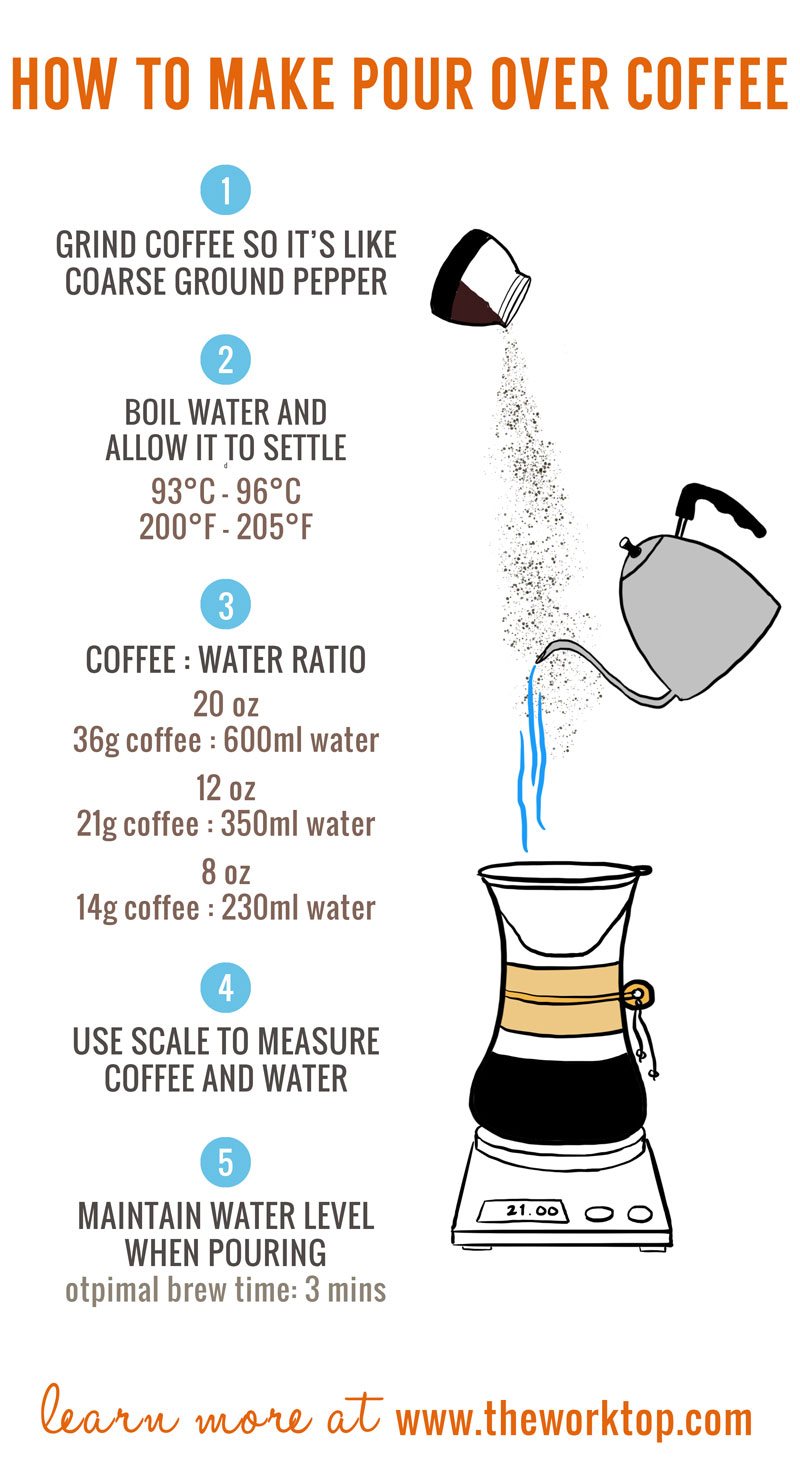As an Amazon Associate CoffeeXplore.com earns from qualifying purchases.
Pour-Over Coffee: Brewing Process, Techniques, Flavor
Pour-over coffee is not just a brewing method; it’s an art form that transforms your morning routine into a flavorful ritual. Many coffee enthusiasts struggle to understand how to harness the full potential of their beans and achieve that perfect cup. Pour-over coffee works by allowing you to control the brewing variables—such as water temperature, grind size, and pouring technique—to extract the richest flavors from your coffee grounds.
In this guide, we’ll delve into the intricacies of the pour-over process, revealing essential equipment, techniques, and tips to elevate your brewing skills. Whether you’re curious about the best coffee maker for beginners or the science behind flavor extraction, you’ll find answers to your burning questions. Join me on this journey as we explore the rich world of pour-over coffee, ensuring you can brew with confidence and enjoyment at home.
Key Facts:
1. Pour-over coffee is a manual brewing method that gives you control over the brewing process.
2. The method involves three main extraction phases: wetting, dissolution, and diffusion.
3. Essential equipment includes pour-over devices like the Hario V60 and Chemex, a gooseneck kettle, and a coffee grinder.
4. Key factors affecting extraction include grind size, water temperature, and water quality.
5. Pour-over coffee is known for its ability to highlight the unique flavors of single-origin coffees.
What is Pour Over Coffee?
Pour-over coffee is a manual brewing method that allows for precise control over the brewing process, resulting in a flavorful and customizable cup of coffee. This method involves pouring hot water over coffee grounds in a filter, allowing gravity to draw the water through the coffee and filter into a carafe or mug. The fundamental mechanism behind this method involves three main extraction phases: wetting, dissolution, and diffusion.
A Deep Dive into Pour-Over Coffee
Pour-over coffee is not just about the final cup; it’s about the journey. The process begins with wetting, where hot water is poured over the coffee grounds, allowing them to absorb water and release trapped carbon dioxide. This step, known as “blooming,” is crucial as it enhances flavor extraction and prepares the grounds for effective brewing.
Next comes dissolution, where the hot water dissolves the soluble compounds within the coffee beans. The goal here is to extract the pleasant flavors while avoiding the less desirable ones. Timing is essential to ensure optimal flavor balance.
Finally, diffusion occurs as the dissolved coffee solids move from the grounds into the liquid coffee below, aided by the continuous addition of fresh water during the brewing process.

A Brief History of Pour-Over Coffee
The pour-over method has been around for over a century, but it gained popularity in the specialty coffee movement in recent years. This method allows coffee enthusiasts to explore different flavors and nuances in their brews. The Hario V60, Chemex, and Kalita Wave are some of the most popular pour-over devices, each with unique designs affecting the flow rate and flavor extraction.
:max_bytes(150000):strip_icc()/Web_1500-SEA-kalita-wave-pour-shot-jesse-raub-01-d4e2aa9b3a574c44abca52742a2874a4.jpg)
How Does Pour Over Coffee Work?
Pour-over coffee works by allowing you to control the brewing variables—such as water temperature, grind size, and pouring technique—to extract the richest flavors from your coffee grounds. The brewing process involves several steps, each crucial for achieving the perfect cup.
Essential Pour Over Coffee Equipment
To brew pour-over coffee, you typically need:
– Devices: Popular pour-over makers include the Hario V60 and Chemex.
– Tools: A gooseneck kettle for controlled pouring, a scale for measuring coffee and water, and a coffee grinder for achieving the desired grind size.

The Pour Over Coffee Brewing Process: A Step-by-Step Guide
Choosing the Right Coffee Beans and Grind Size
The first step in the pour-over process is choosing the right coffee beans and grind size. Freshly ground coffee beans are essential for optimal flavor extraction. The grind size should be similar to sea salt, adjusting it based on your taste preferences.
Mastering the Bloom: The First Step to Flavor
The bloom is a crucial step in the pour-over process. Start by pouring a small amount of hot water over the grounds (about twice the weight of the coffee) to allow the coffee to “bloom.” This step releases carbon dioxide and enhances flavor extraction. Wait for about 45 seconds before proceeding.
Pour Over Coffee Ratio: Water to Coffee
Maintaining the right coffee-to-water ratio is essential for a balanced brew. A commonly recommended ratio is 1:15, though personal preference can dictate adjustments. For example, if you use 20 grams of coffee, you would need 300 grams of water.
Pour Over Coffee Temperature: Finding the Sweet Spot
The water temperature for pour-over coffee should be between 195°F to 205°F. Maintaining the right temperature is crucial for optimal extraction. Too hot can extract undesirable flavors, while too cool may lead to weak coffee.
:max_bytes(150000):strip_icc()/Web_1500-SEA-kalita-wave-pour-shot-jesse-raub-01-d4e2aa9b3a574c44abca52742a2874a4.jpg)
What Factors Affect Pour Over Coffee Extraction?
Several factors affect pour-over coffee extraction, including grind size, water temperature, and water quality. Understanding these factors can help you achieve the perfect brew.
Grind Size: The Key to Flavor Control
Grind size is a crucial factor in pour-over coffee extraction. Finer grinds increase surface area, enhancing extraction but can lead to over-extraction if brewed too long. Coarser grinds may result in under-extraction. Experimenting with grind size can help you find the perfect balance for your taste preferences.
Water Temperature: Its Impact on Extraction
Water temperature significantly impacts pour-over coffee extraction. The ideal temperature range is between 195°F to 205°F. Too hot can extract undesirable flavors, while too cool may lead to weak coffee. Maintaining the right temperature is crucial for optimal extraction.
Water Quality: Unveiling Hidden Flavors
Using filtered water free of impurities can significantly affect the taste of your pour-over coffee. Water quality plays a vital role in unveiling the hidden flavors of your coffee beans.

Pour Over Coffee vs. Other Brewing Methods: Understanding the Differences
Pour-over coffee stands out from other brewing methods due to its ability to highlight the unique flavors of single-origin coffees. Understanding the differences between pour-over and other methods can help you choose the best brewing technique for your preferences.
Pour Over Coffee vs. Drip Coffee
Pour-over coffee differs from drip coffee in its manual nature and control over the brewing process. Drip coffee machines automate the brewing process, while pour-over requires manual pouring and control over variables like water temperature and grind size.
Pour Over Coffee vs. French Press
The French press is an immersion brewing method that involves steeping coffee grounds in hot water before pressing them down. Pour-over, on the other hand, involves pouring hot water over the grounds, allowing gravity to draw the water through the coffee and filter.
Pour Over Coffee vs. Espresso: A Flavor Showdown
Espresso is a high-pressure brewing method that extracts coffee quickly and intensely. Pour-over coffee, in contrast, is a slower, more controlled process that highlights the subtle flavors of the coffee beans.

The Advantages and Disadvantages of Pour Over Coffee
Pour-over coffee offers several advantages and disadvantages that you should consider before choosing this brewing method.
Why Choose Pour Over? The Benefits
Pour-over coffee provides enhanced flavor due to its ability to showcase intricate notes, especially with single-origin coffees. It also offers greater control over brewing variables, allowing for customization based on personal taste.
Common Challenges and Troubleshooting Tips
Pour-over coffee can be challenging for beginners due to its manual nature and susceptibility to human error. Issues like channeling and inconsistency can affect the final brew. However, with practice and the right techniques, you can overcome these challenges and achieve a consistently delicious cup of coffee.
Mastering Pour Over Coffee: Tips and Tricks for Beginners
Mastering pour-over coffee requires practice and understanding of the brewing process. Here are some tips and tricks to help you get started.
Choosing the Right Pour Over Coffee Maker
Choosing the right pour-over coffee maker is essential for achieving the perfect brew. Popular options include the Hario V60, Chemex, and Kalita Wave. Each device has unique designs affecting the flow rate and flavor extraction.
Experimenting with Techniques
Experimenting with different pouring techniques can help you achieve the perfect brew. Try varying the pour rate, water temperature, and grind size to find the combination that best suits your taste preferences.
Elevating Your Pour Over Experience
Elevating your pour-over experience involves paying attention to details like water quality, grind size, and pouring technique. Using freshly ground coffee beans and filtered water can significantly enhance the flavor of your pour-over coffee.
:max_bytes(150000):strip_icc()/Web_1500-SEA-kalita-wave-pour-shot-jesse-raub-01-d4e2aa9b3a574c44abca52742a2874a4.jpg)
FAQs About Pour Over Coffee:
Q: What is the best pour over coffee maker for beginners?
A: The Hario V60 is a popular choice for beginners due to its simplicity and effectiveness in extracting flavors. It’s easy to use and allows for experimentation with different pouring techniques.
Q: How do I choose the right grind size for my pour over?
A: The ideal grind size for pour-over coffee is similar to sea salt. This size allows for optimal extraction without over-extracting or under-extracting the coffee. Experimenting with grind size can help you find the perfect balance for your taste preferences.
Q: What is the ideal water temperature for pour over coffee?
A: The ideal water temperature for pour-over coffee is between 195°F to 205°F. Maintaining the right temperature is crucial for optimal extraction. Too hot can extract undesirable flavors, while too cool may lead to weak coffee.
Q: How long does it take to make pour over coffee?
A: The entire brewing process for pour-over coffee usually takes about 3-4 minutes, depending on the grind size and pour technique.
Q: Can I use regular coffee beans for pour over?
A: Yes, you can use regular coffee beans for pour-over coffee. However, using freshly ground, high-quality beans can significantly enhance the flavor of your brew.
Summary:
Pour-over coffee allows for unparalleled control over your coffee brewing experience, unlocking a world of flavor nuances. By understanding its mechanics, anyone can master this art. The process involves three main extraction phases: wetting, dissolution, and diffusion. Essential equipment includes pour-over devices like the Hario V60 and Chemex, a gooseneck kettle, and a coffee grinder. Key factors affecting extraction include grind size, water temperature, and water quality. Pour-over coffee stands out from other brewing methods due to its ability to highlight the unique flavors of single-origin coffees. While it offers several advantages, such as enhanced flavor and greater control, it also presents challenges like channeling and inconsistency. With practice and the right techniques, you can overcome these challenges and achieve a consistently delicious cup of coffee.
Remember, pour-over coffee is not just about the final cup; it’s about the journey. Experimenting with different pouring techniques, grind sizes, and water temperatures can help you find the perfect balance for your taste preferences. So, grab your favorite pour-over device, some freshly ground coffee beans, and embark on this flavorful journey. Happy brewing!

